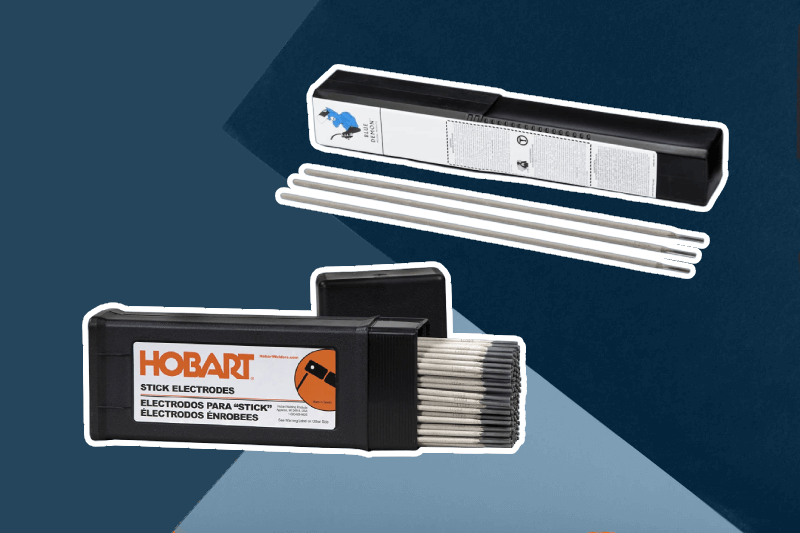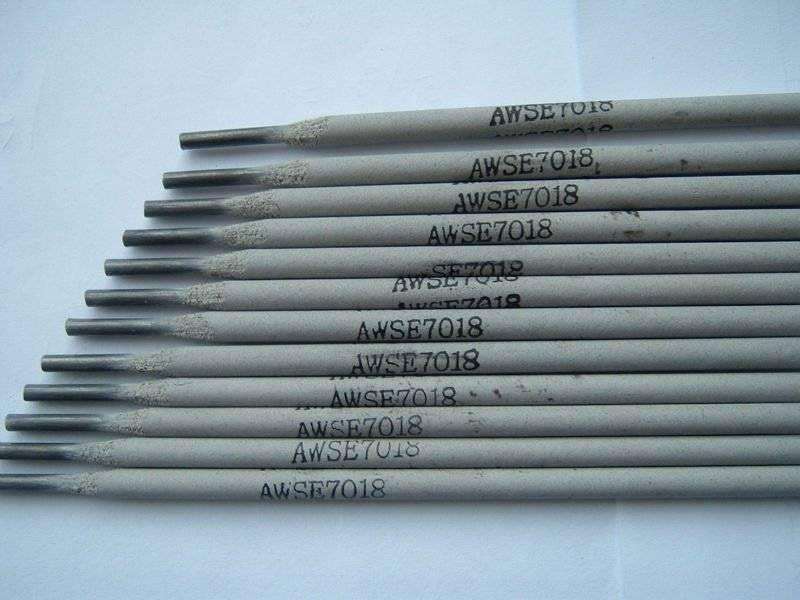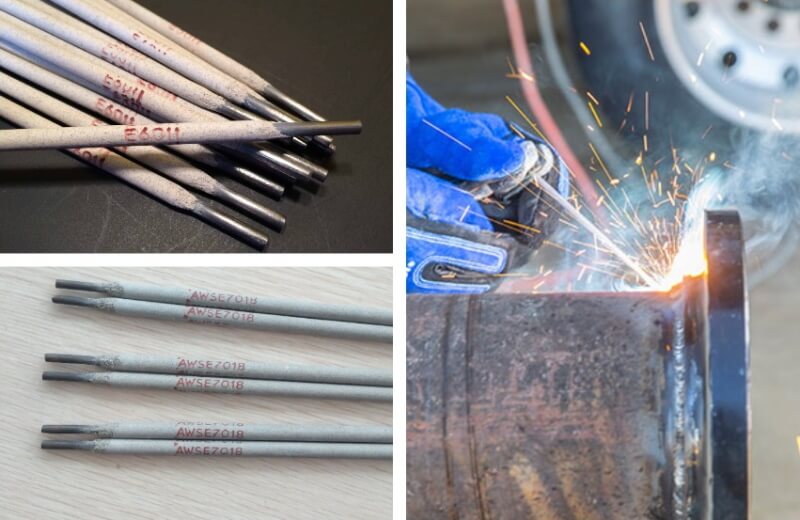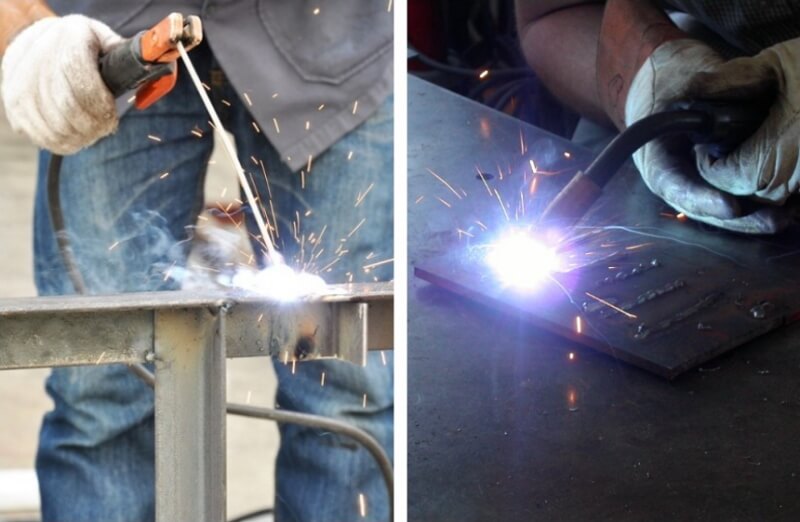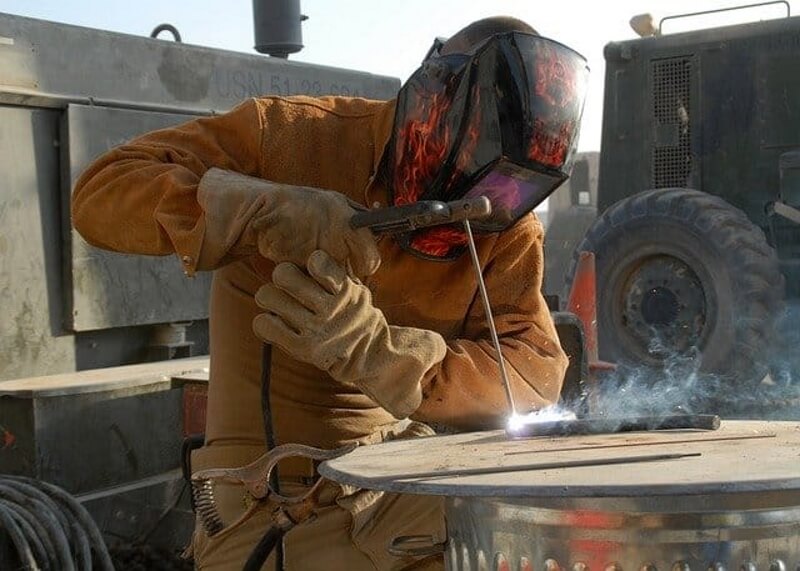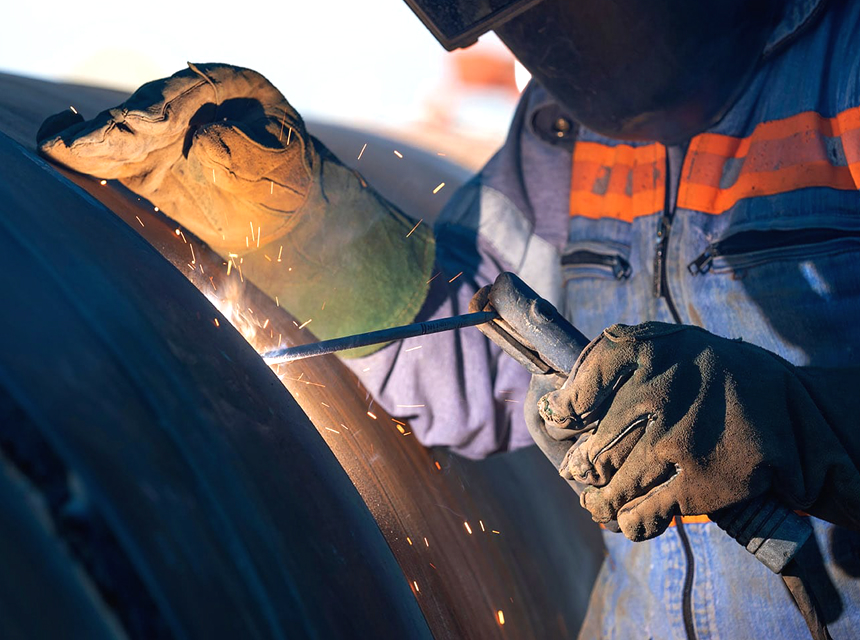

For most—if not all—beginners, choosing the right welding rod for their welding project can be one of the trickiest decisions. With so many welding rods on the market, it’s not hard to understand why many welders struggle to pick the right option. Trust us, you don’t want to make the wrong decision here, especially if you’re on a budget.
When it comes to arc welding, 7014 and 7018 welding rods are household names but many welders struggle to tell the differences between them due to their similarities. If you’re in the same ship, we’ll compare 7014 vs 7018 welding rods to help you learn the differences between both materials.
Besides, the differences between 7014 vs 7018 welding rod are based on various properties such as coating, storage conditions, tensile strength, compatible metals, amongst others. Read on to learn every factor that differentiates both welding rods and see which one suits you better.
The 7014 welding rod is designed for arc welding. It is coated with titania and iron powder. This rod is a popular choice among welders, thanks to its ease of use, good disposition, and impressive weld characteristics. For example, it can be used in all positions although it works best in a flat position.
Also, the 7014 rod is mostly used for welding low metal alloys. This makes it perfect for household welding. There’s no shortage of the 7014 rod on the market. According to most reviews, the Forney 32005 E7014 is a high-quality, all-position welding rod. Plus, it requires minimal surface preparation to work.
Code: AWS A5.1 ASME SFA 5.1, F-3, A-1
Current: DC & AC
Diameter: 1/16”, ¼”, 3/32”, 1/8”, 5/16” 5/32”, 3/16”
Tensile strength: 70,000 PSI
The 7018 welding rod is also designed for arc welding. It is also known as a low hydrogen electrode because it’s coated with a low-hydrogen, iron-based flux compound. Like the 7014 rod, the 7018 rod delivers a good disposition. However, it’s a bit sophisticated to use and isn’t ideal for beginners or amateur users. Therefore, this welding rod is mostly used for big projects.
You can find various 7018 welding rods on the market but you must look out for a reliable option like the Forney 30705 E7018, which is quite easy to use and requires low penetration. Additionally, it’s ideal for out-of-position welding and general fabrication of cold roll steels.
Code: AWS A5.1 ASME SFA 5.1, F-4, A-1.
Current: DC & AC
Diameter: 1/16”, ¼”, 3/32”, 1/8”, 5/16” 5/32”, 3/16”
Tensile strength: 70,000 PSI
As we hinted earlier, it’s a bit tricky to differentiate between 7018 vs 7014 welding rods. To make life easier for you, we’ll pit the 7014 welding rod vs 7018 welding rod and dissect the differences between them.
In terms of coating, the 7014 and 7018 welding rods are two different electrodes. Besides, the electrodes’ different flux coating is the only structural difference between them. The 7018 features a low hydrogen coating of potassium iron because it’s designed to weld steel that contains high carbon. The 7014, on the other hand, features a coating of titanium iron powder.
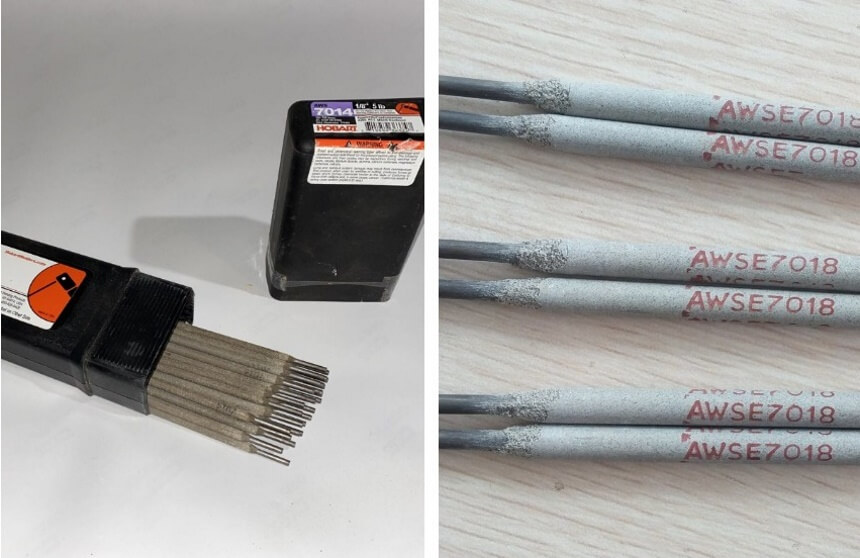
When it comes to storage conditions, 7014 and 7018 welding rods differ. Therefore, you can’t make the mistake of storing both of them in the same condition.
Remember that the 7014 rod contains titanium coating, making it suitable to be stored in a moist or damp environment. The 7018, on the other hand, has a low-hydrogen coating, making it unfit to be stored in moist or humid conditions. You’ll need to keep this welding rod in the oven before use.
Clearly, the 7014 welding rod is more comfortable to store than the 7018 rod.
Price is another factor that differentiates the 7014 and 7018 welding rods. For both rods, prices vary depending on their weights. For example, a 5-pound 7014 rod can cost between $15 and $25 while a 10-pound 7018 electrode can cost between $30 and $45. The specific price usually depends on the manufacturer.
Even though the prices of both welding rods don’t differ sharply, we noticed that the 7014 is a bit more expensive. We compared the prices of many products and realized that the 7014 welding rod always comes at a higher price than the 7018.
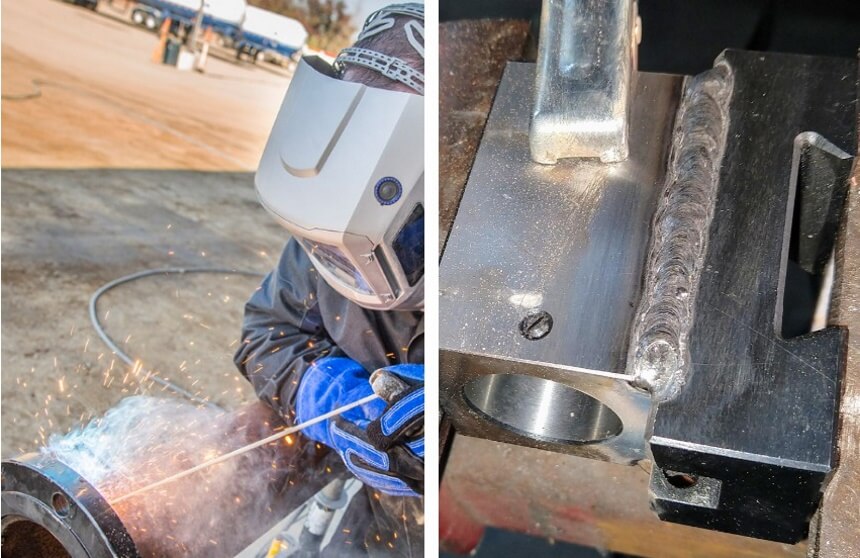
When it comes to freezing time, the 7018 welding rod comes first. While this rod has the fast freezing capability, the 7014 rod does not. The 7014 electrode is a fill-freeze iron powder-coated rod. Hence, it has a shorter freezing time than the 7018 rod.
If you’re wondering what the implications are, the 7014 rod won’t allow penetration to the same extent as the 7018 rod when used on DC. Also, the 7018 rod offers an added advantage to welders to work in uncomfortable positions.
As we’ve hinted a few times in this article, the 7014 and 7018 welding rods have different applications. Generally, the 7014 rod is used for small projects (farm machinery, automotive parts, metal fixtures & barges) or household welding. This is mostly because of its ease of use, which makes it a popular choice amongst amateur welders.
On the other hand, the 7018 welding rod is mostly used by professional welders because it’s a bit sophisticated. We don’t advise a beginner to use this rod because it’s not very easy to handle. Besides, the 7018 rod has high tensile strength and fewer chances of causing cracks.
Hence, it’s the preferred choice for larger construction works such as buildings, bridges, factories, powerhouses, energy power plants, etc. Additionally, the 7014 rod is ideal for use around damp areas but the 7018 electrode is not.
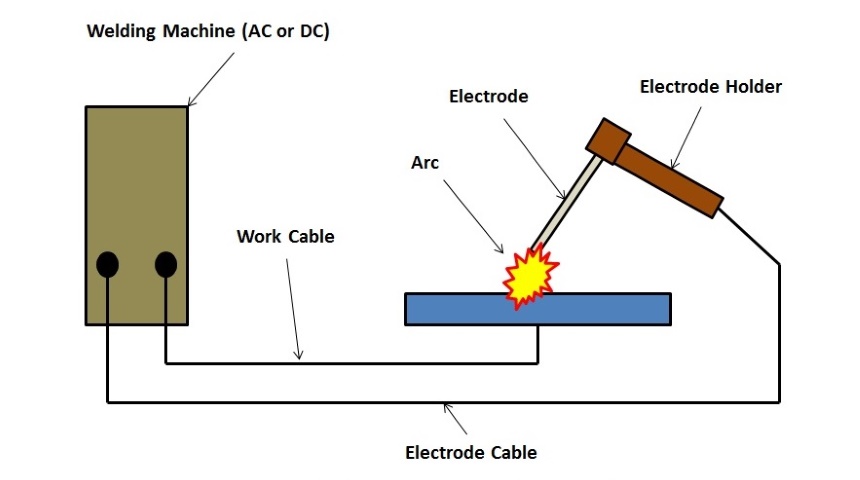
Even though there’s no pronounced difference here, your choice may be informed by the application(s).
Before opting for a welding rod, you must consider its compatibility with various welding positions. This is important because not all rods can be used in every position; some allow welding in only one or two positions while others allow in more positions.
To determine the welding position that works for your welding rod, you’ll have to check its third digit. In the case of the 7014 and the 7018, “1” is the third digit of both rods. And “1” indicates that the rods can be used in nearly all positions, including flat, horizontal, overhead, decline, incline, etc.
However, on a practical note, running the 7014 vertical, up or down, can be a bit challenging. Although the 7018 rod is more versatile, it is a bit tricky to run vertical downhill.
A welding rod’s first two digits determine its tensile strength. Since the 7014 and 7018 rods have “70” as their first two digits, they have the same tensile strength, which is 70,000 PSI on the final weld.
As we suggested at the beginning of this article, struggling to tell the differences between the 7014 and 7018 welding rods is not a big deal, especially if you’re new to welding. To help you identify the differences between these two rods, we’ve dissected their properties.
By now, you know that the 7014 and 7018 welding rods have similar features but they also have some different properties. For example, they have different coatings and storage conditions. You should be familiar with all the differences between the 7014 vs 7018 before making a choice. If you’re a beginner, the 7014 welding rod’s ease of use and storage would help you.
However, you might favor the 7018 rod if you’re a professional. Ultimately, ensure that you choose a rod that will satisfy your needs.
